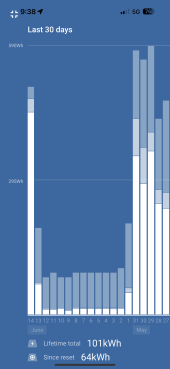Looks like you have come into the hard truth about using LiFe in an area that gets winter.
It just does not make sense to use Li batteries in those types of conditions. Insulation will slow down the heat transfer but it will not stop it.
As far as the Trojan T 105s, those are a deep discharge, low current style battery. They are very good, but designed for use with things like fans, lights, the DC power needed for a fuel heater, etc. They are not really designed for use with the power demands of an inverter.
For an inverter, you will want a marine style battery, which is a sort of hybrid between a deep discharge and a starter battery. They are designed to keep up with the serious power draw of an inverter. Examples of this are Lifeline GPL series and Vmax tanks, there are a few more - will try to think of them.
Rough numbers design around the concept of 1 battery per 500 watts of inverter capacity as far as ability to delivery power minimum. You can add more capacity as needed for total needs, but it takes that to keep up with the inverter.
Nothing wrong with SOKs for the correct application - but your cabin is completely the wrong application for them.
___________
A 24 volt system will be more tolerant of cold weather conditions than a 12 volt system as it is less sensitive to voltage sag from the cold.
Poly panels tend to be better at collecting sunlight in over cast conditions - at least in my testing of some solarland ones with a bogart controller.




